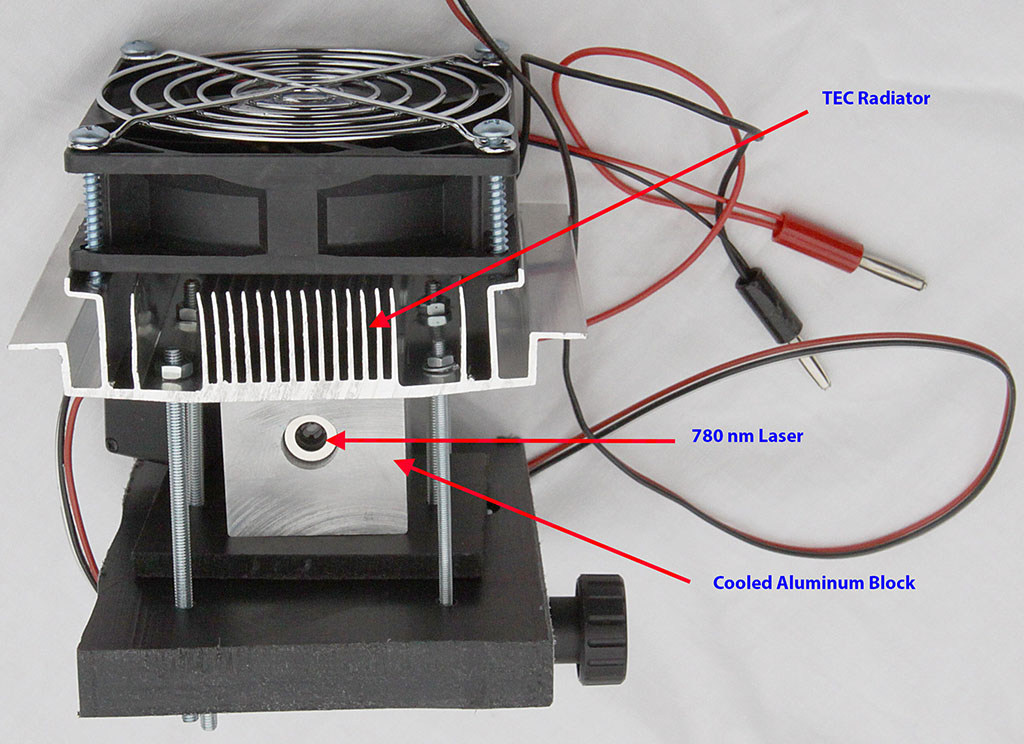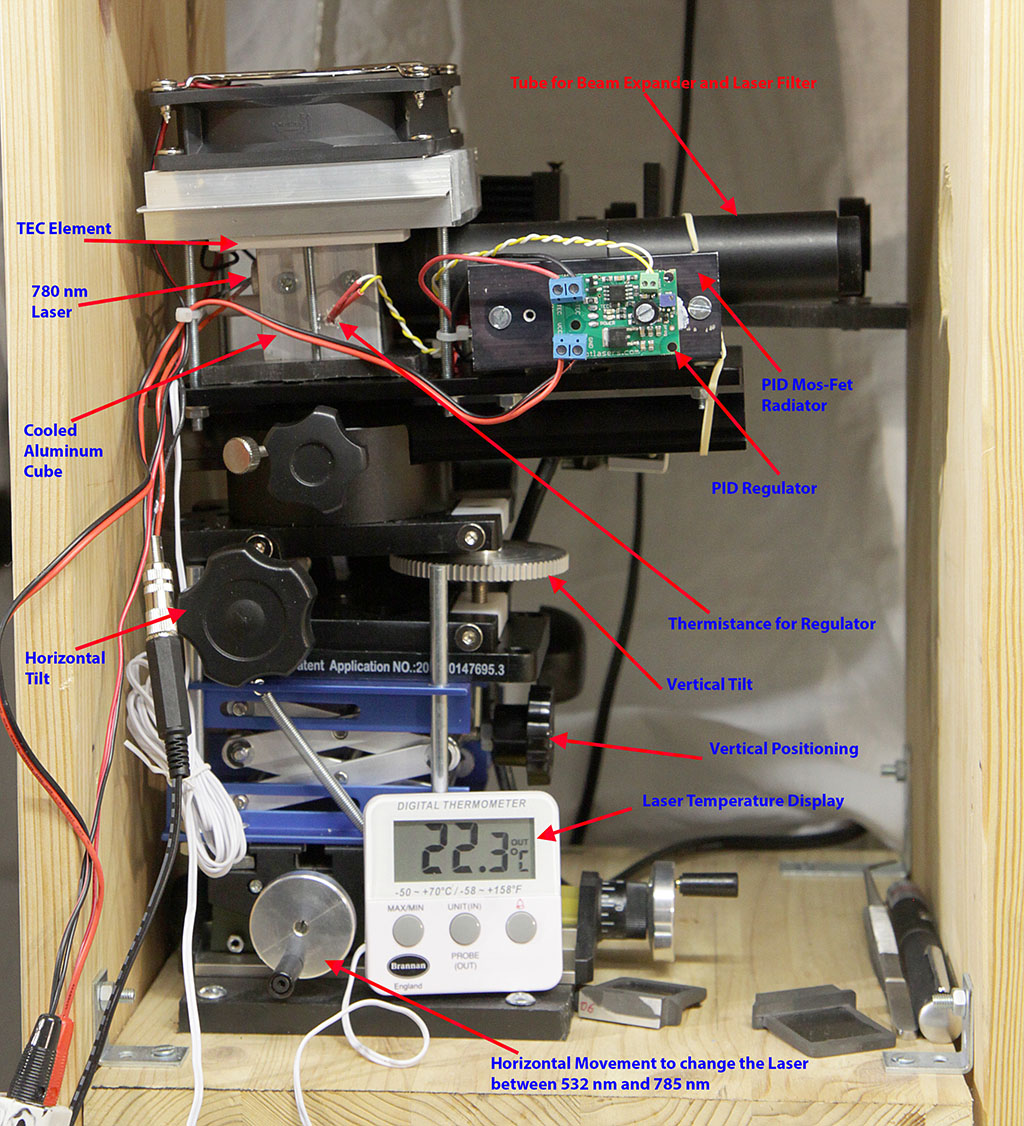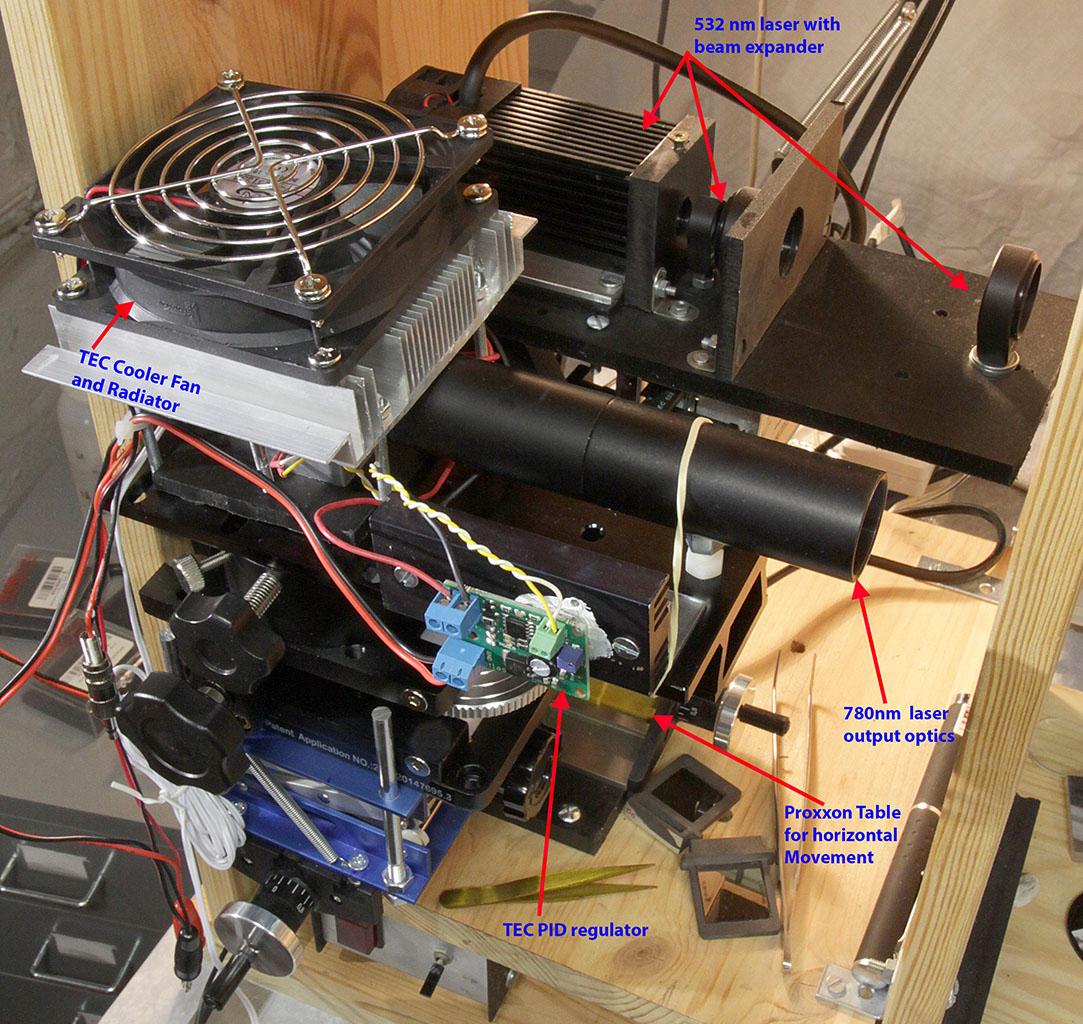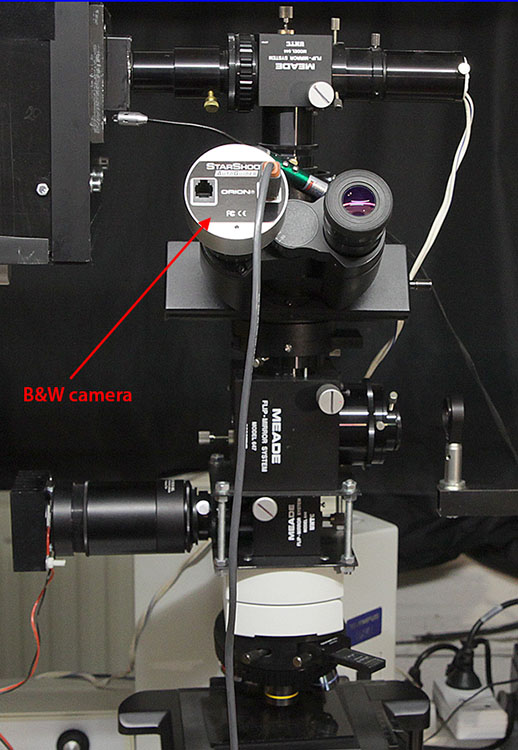Raman 780 nm Laser Head
TEC CoolerThe picture below illustrates the construction of the laser head. The diode laser is inserted into an aluminum cube. The upper face of this cube is connected to a thermo electric cooler (TEC) with thermal paste. A radiator with a fan is secured on the hot face of the TEC to avoid overheating. When a current is sent to the TEC, the laser can be cooled down to a temperature of about -5° in a few minutes. This is plenty enough to change the laser wavelength and bring it into the pass band of the laser cleaning filter. |
 |
Complete laser head.The laser must be cooled down and its temperature must be precisely controlled to stabilize the wavelength. The stability of the laser wavelength is important for Raman spectroscopy as the Raman lines are moving according to the laser wavelength. To keep the temperature constant, a PID regulator is used as shown in the figure. Two holes were drilled into the aluminum cube, one for the thermistance connected to the regulator and one for the sensor of a small digital thermometer to display the temperature. The temperature stability is closed to 0.1°C. To position the laser beam at the center of the microscope stage, 3 different mechanical devices are used. From the top to bottom: the vertical and horizontal tilt with a telescope positioning system, the vertical movement with a modified lab jack bellow and the horizontal movement of the whole laser head with a Proxxon table. The tube at the output of the laser is fitted with a beam expander optics and the Semrock laser cleaning filter at the end of the tube. This filter can be removed during the raw positioning of the laser so that a faint red spot (spontaneous transitions of the diode) can be seen. When the filter is in place, the laser beam is completely invisible. It is very important to wear good safety goggles even if the beam is not visible.
|
 |
| On the view below, it can be seen that two laser heads are mounted on the Proxxon table: the 532 nm laser and the 780 nm. The laser wavelength for Raman spectroscopy can be changed from 532 to 780 nm by moving the whole equipment with the help of the handle of the Proxxon table. |
 |
| As the 780 nm laser beam is invisible, the positioning and focusing of the laser in the microscope field of view must be done with the help of a black and white camera. This camera should be unfiltered and should have a good sensitivity at the laser wavelength. I'm using for this purpose an astronomical guiding camera from Orion. This camera replaces one of the microscope eyepiece. |
 |